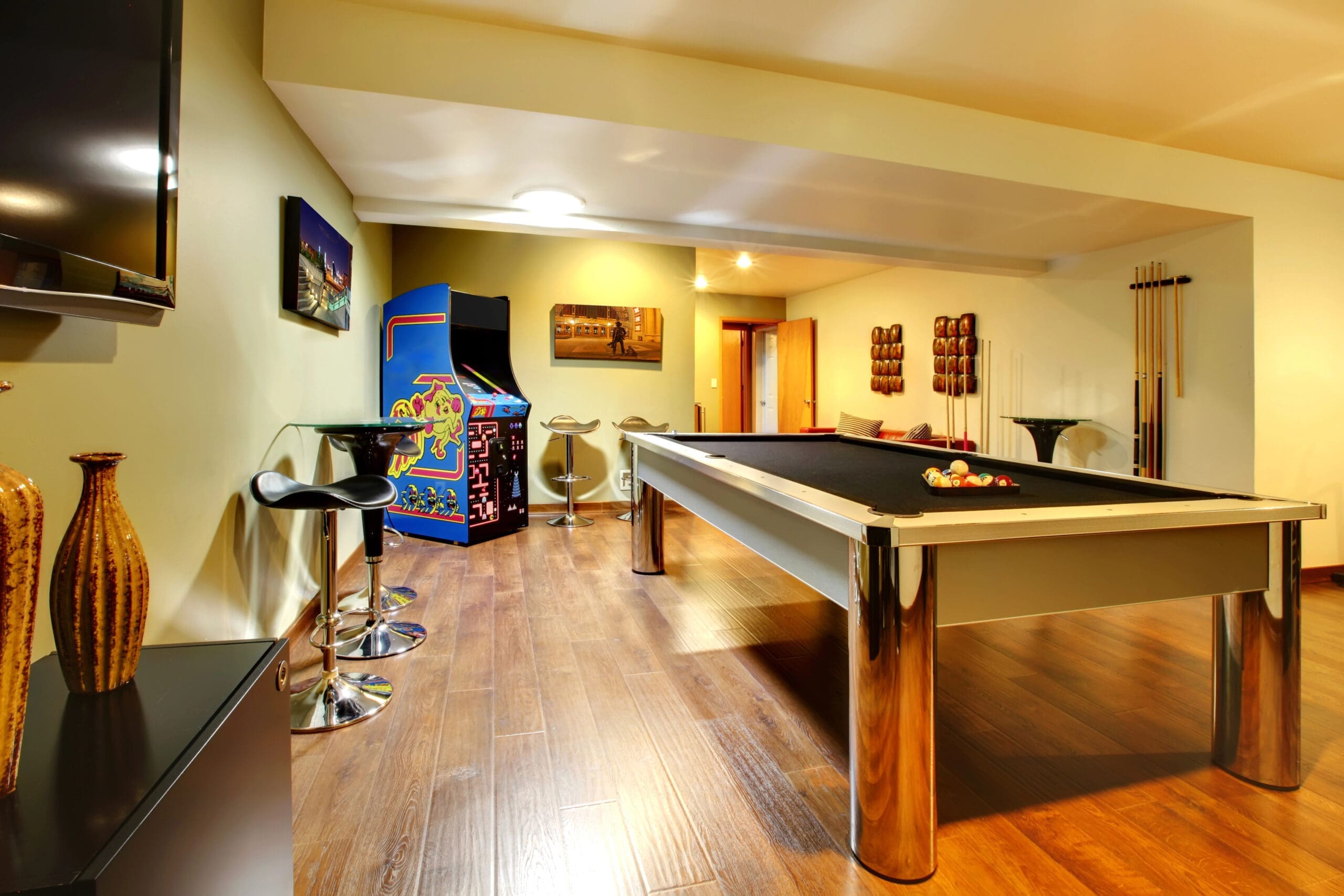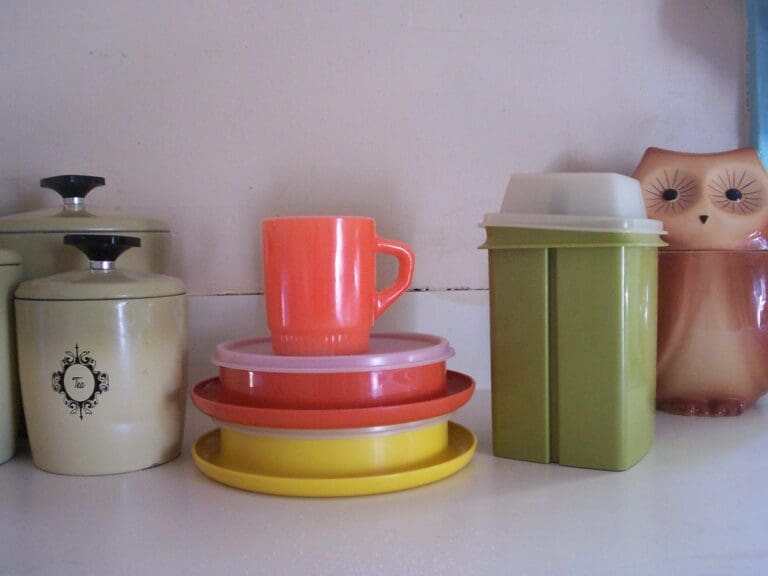Renovating your basement, especially adding more livable space, will increase your home’s value. In this guide, we’ll offer 3 ideas for DIY basement renovations and 3 projects requiring a contractor or specialist.
Top Three Ideas for Renovating Your Basement Yourself
Below you’ll find three ideas for renovating your basement that can add functionality and value to your home.
1. Painting or Texturing Concrete Floors
If your basement has a concrete floor, you can improve both the look and safety of the space by painting or texturing the concrete floor. Painting is an easy way to hide minor stains and imperfections on the surface.
Make sure to choose a paint formulated specifically for concrete floors. It’s more durable and will be less prone to chipping and flaking. Epoxy coatings are even better, although they can be harder to work with. They will last longer and stand up to heavy traffic. You can also apply an anti-slip sealer afterward.
Another option is to use textured floor paint which will provide anti-slip properties, as well as conceal flaws in the concrete. It’s also made of epoxy and can withstand wear and tear.
Concrete paint will run you $15-$30 per gallon. Epoxy runs $30-$150 per gallon. Sealer runs $10-$150 per gallon. A gallon covers up to 400 square feet.
2. Paint the Ceiling and Walls
Many unfinished basements have brick or cinder block walls. You can liven up the drab look of the masonry with some paint to add a cheerful color or even white to create more light. The best type of paint to use on these types of materials is latex masonry paint. You can also use acrylic paint, but it will require a few coats because concrete is more porous than drywall.
If you already have a finished basement, you can paint the walls or ceiling a new color to suit your mood for the space, whether that is calm or bold. Consider using a different color to create an accent wall or to accent the ceiling.
Your only cost in this inexpensive renovation project is the cost of paint and painting supplies.
3. Create a Storage System
Basements seem to be the place for storing items. However, it’s easy for the space to become a catch-all storage space filled with items that don’t fit in closets and cabinets above ground. Tame this clutter by using cabinets and shelving as organizers.
Shelving is easy to build and assemble and can be constructed with many types of materials. Another inexpensive option is to use 5-tier adjustable wire metal shelving racks commonly used by restaurants. These have wheels and are easy to move around.
You can also purchase wood or plastic storage cabinets. Rubbermaid and other brands make some excellent units under $200, and many have nice aesthetics. These are simple to assemble and can be found at big-box hardware stores.
You can also invest in clear storage bins and containers for items you want to keep visible. These are easily stacked.
Top Three Ideas for Professional Basement Renovation
For some jobs, they are best handled by experienced professionals. You can either hire a general contractor, a home remodeling specialist, or someone who specializes in the specific type of renovation project you need, such as a waterproofing company, carpenter, electrician, etc. Many stores that sell the materials can also refer you to installers.
With a professional basement renovation project, the cost of labor accounts for roughly 40-60% of the total cost.
1. Waterproofing Your Basement
Before you can even consider making any improvements to your basement or finish it, it must be waterproofed. Otherwise, leaking can destroy all your work. If your basement isn’t already waterproofed – that is your first basement renovation project to undertake.
More than any other area of your home, your basement is the most susceptible to water intrusion and damage. Left unchecked, water seeping into your basement can create mold and mildew that can get into your home’s air system and spread throughout the house. Basement mold can exacerbate allergies or respiratory distress.
The cost of materials for waterproofing a basement runs between $3.50 and $10 per square foot. A 1,000-square-foot basement will range between $3,000-$10,000 depending on your location and the waterproofing method used. The national average cost is $4,920.
2. Finish Your Basement
A finished basement is transformed into an additional living area. It’s typically similar to the rest of the house in that it is insulated, dry-walled, painted, has electrical, heating and cooling, plumbing, and has flooring rather than concrete.
Livable space is also defined as a ceiling height of at least seven feet. It has no exposed studs, pipes, or electrical systems.
In terms of value, a finished basement adds more square footage to your home.
The cost to finish a basement can vary widely depending on the square footage of the basement and the materials used, fixtures, flooring, etc. Most projects range between $7 and $23 per square foot, or from $4,200-$45,000, with an average cost of $20,000. The national average for finishing 1,000 square feet is between $7,000-$23,000.
3. Create a Functional Space
A less expensive option than finishing your entire basement is to create a functional space in part of your basement. Naturally, this will vary depending on the type of function you are creating the space for. Assess the needs you’ll have for that type of space.
For example, you might want a small office space or a gym area.
For a small office space, you might need to frame some walls. You’ll likely need insulation, drywall, electrical, lighting, flooring, a door, and some type of heating and/or cooling. You may also want a small half bath with a sink and toilet. This will also need the aforementioned materials.
For a gym space, you may only need some flooring, electrical, lighting, and some type of heating and/or cooling.
Basic finishing costs for basements range between $7 and $23 per square foot. However, this could be less depending on what type of labor and materials will be required.








